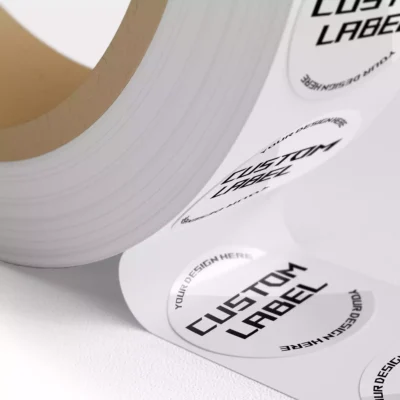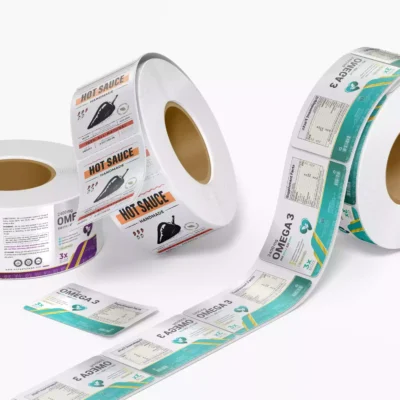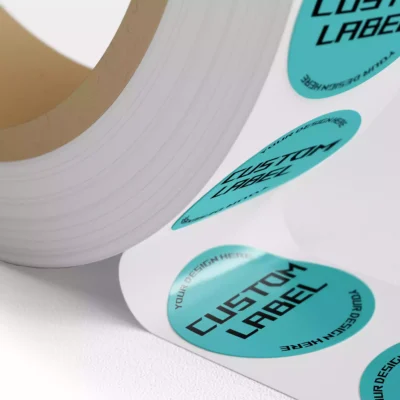Holographic stickers are famous for their eye-catching, iridescent effects, making them highly appealing for aesthetic and security purposes. Creating these stickers involves several steps, utilizing advanced materials and technologies to achieve the desired visual impact. Here’s a detailed look at how holographic stickers are made, mainly focusing on how the holographic effect is added to vinyl.
Material Preparation
The creation of holographic stickers begins with the selection of materials. The primary material used is a metalized polyester film. This film is coated with a thin layer of metal, typically aluminum, which gives it its reflective properties. The metalized film is essential for producing the holographic effect, allowing light to be reflected and refracted in multiple directions.
Embossing the Film
The key to achieving the holographic effect in stickers lies in a process known as embossing. During this stage, the metalized polyester film is passed through a set of rollers engraved with a precise pattern. These rollers imprint microscopic grooves and ridges onto the film. The patterns can vary, resulting in different holographic effects, such as rainbow or dot matrix holograms. The embossed patterns diffract light into its component colors, creating the iridescent, rainbow-like effect characteristic of holographic stickers. This process must be executed with high precision to ensure the quality and uniformity of the holographic effect.
Printing the Design
Once the holographic film is prepared, the next step is printing the desired design onto it. This is typically done using digital printing technology, which allows for high-resolution images and a wide range of colors. The design is printed directly onto the embossed film, aligning the print with the holographic patterns to maximize the visual effect. The inks must be compatible with the holographic material to ensure durability and adhesion.
Laminating the Film
After printing, a protective laminate is applied to the surface of the holographic film. This clear laminate serves multiple purposes: it protects the printed design from scratches, moisture, and UV light and enhances the sticker’s overall durability. Laminating also helps preserve the holographic effect, ensuring that it remains vibrant and eye-catching even after prolonged use.
Cutting the Stickers
The laminated holographic film is then cut into individual stickers. This can be done using various cutting methods, such as die-cutting, kiss-cutting, or laser cutting. Die-cutting involves creating a custom-shaped metal die that cuts through the material, while kiss-cutting cuts only the top layers, leaving the backing intact. Laser cutting offers high precision and is ideal for intricate designs. The choice of cutting method depends on the sticker design’s complexity and the desired final shape.
Quality Control
Quality control is a crucial step in the production of holographic stickers. Each batch of stickers is inspected for defects such as misalignment, poor print quality, or insufficient holographic effect. This ensures that only high-quality stickers reach the customers. Any defects identified during this process are corrected before the stickers are packaged for shipment (customstickers).
Environmental Considerations
As with many manufacturing processes, producing holographic stickers involves environmental impact considerations. Many manufacturers are now adopting eco-friendly practices, such as using recyclable materials and minimizing waste during production. Additionally, advancements in printing and embossing technologies are helping to reduce the carbon footprint associated with holographic sticker production.
Applications of Holographic Stickers
Holographic stickers are used in various applications due to their unique visual appeal and functional benefits:
- Branding and Marketing: Holographic stickers are often used in product packaging to attract consumer attention and enhance brand recognition. Their eye-catching appearance makes them an effective marketing tool for differentiating products on crowded shelves.
- Security and Authentication: Due to their complex manufacturing process and distinctive appearance, holographic stickers are difficult to replicate, making them an ideal solution for security and anti-counterfeiting purposes. They are commonly used on official documents, ID cards, and high-value products to verify authenticity.
- Collectibles and Decorative Items: Holographic stickers are popular in the world of collectibles, such as trading cards and limited-edition merchandise. Their vibrant and dynamic appearance adds value and appeal to these items.
Final Thoughts
The creation of holographic stickers is a sophisticated process that combines advanced materials and precise manufacturing techniques. From the initial embossing of the metalized film to the final quality control checks, each step is crucial in producing stickers that are both visually stunning and functional. Whether used for branding, security, or decoration, holographic stickers continue to captivate and intrigue with their unique and mesmerizing effects.





